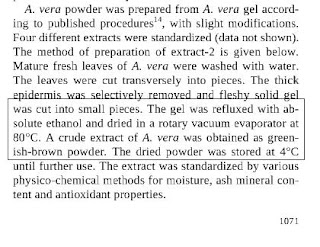I have been reading about so many cases of fabrication, respected, well cited scientists who have happily and diligently fabricated papers and research proposals for many years, that it is quite clear that journal editors are only too eager to accept papers from people who have been around for a while.
Of course, what do we believe and what should we expect when we pick up a journal and refer to its impact factor to check its "worth"? What constitutes a good research article and a good study to write up in "good research article(s)"? Are we all really that inventive that we have to keep coming up with new discoveries?
Obviously not. But when we apply existing knowledge to a study, should our hypotheses not take into account the scientific validity of our assumptions? We may re(^n)discover that low pH and urea denature proteins, but should our methodology not take into account these facts and not base a study on such ideas? Apparently not as we see below--not sure why two papers come up with the same title:
1) Shiva Ranjini S. & Vijayalakshmi M.A. Study of catalase adsorption on two mixed-mode ligands and the mechanism involved therein., Journal of molecular recognition : JMR, PMID: 23108613
2) Fleminger G., Ehrlich G., Shiva Ranjini S. & Vijayalakshmi M.A. (2012). Study of catalase adsorption on two mixed-mode ligands and the mechanism involved therein, Journal of Molecular Recognition, 25 (11) 542-548. DOI: 10.1002/jmr.2181
------------------------------------------------------------------------------------------------------------
These are the main sorbents in this study (HEA and PPA HyperCel ligands):
--------------------------------------------------------------------------------------------------------
The forms of catalase being investigated:
---------------------------------------------------------------------------------------------------------
Adsorption and elution buffers (1,2: pH 7; 3,4: pH 4.5 elution; 1,4: adsorption buffers do not contain salt)
---------------------------------------------------------------------------------------------------------
Equilibriation and elution:
-----------------------------------------------------------------------------------------------------------
They elute the PPA sorbent with urea....
-----------------------------------------------------------------------------------------------------------
The abstract from the earlier catalase purification paper from this group also appears below.
------------------------------------------------------------------------------------------------------------


-----------------------------------------------------------------------------------------------------------
From the earlier paper:

-----------------------------------------------------------------------------------------------------------
-----------------------------------------------------------------------------------------------------------
Funny that they ran their SDS-PAGE in non-reducing conditions on BLC (bovine liver catalase) eluted from PPA with UREA.
8M urea (lane 5 above)!!!
Is it not well known that urea denatures proteins? In case, people need references, here's one I found on the Internet. Low pH, urea ... can these be the basis of trying to separate proteins from other components when it is well known that they denature proteins. Don't the proteins of interest also have to be active in the end?
------------------------------------------------------------------------------------------------------------
-----------------------------------------------------------------------------------------------------------
-----------------------------------------------------------------------------------------------------------
The same assumptions about temperature promoting adsorption. Still, Figures 1 and 2 showing protein recovery from HEA for bovine liver catalase at 24 and 37 degrees Celsius, respectively, show that even if pH 4.5 in the elution buffer decreases the difference in protein recovery from retained and non-retained fractions, there is lower recovery of protein in the retained and eluted fractions and also in the non-retained fractions at 37 degrees Celsius.
----------------------------------------------------------------------------------------------------------
Some more re(^n)discoveries: 1) Molecules interact with each other at multiple points, not just at one point.
2) The pi electrons of the phenyl group participates in interactions.
-----------------------------------------------------------------------------------------------------------
3) Chromatography is based on changing pH and conductivity conditions for adsorption and elution of different molecules from different sorbents.
4) Also, the nature of the material being purified influences this process....
----------------------------------------------------------------------------------------------------------
And to stress these points:
3) Chromatography is based on changing pH and conductivity conditions for adsorption and elution of different molecules from different sorbents.
4) Also, the nature of the material being purified influences this process....
Shiva Ranjini S, & Vijayalakshmi MA (2012). Study of catalase adsorption on two mixed-mode ligands and the mechanism involved therein. Journal of molecular recognition : JMR, 25 (11), 542-8 PMID: 23108613
2) Fleminger G., Ehrlich G., Shiva Ranjini S. & Vijayalakshmi M.A. (2012). Study of catalase adsorption on two mixed-mode ligands and the mechanism involved therein, Journal of Molecular Recognition, 25 (11) 542-548. DOI: 10.1002/jmr.2181









































































